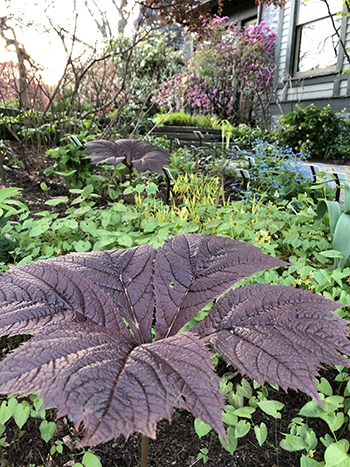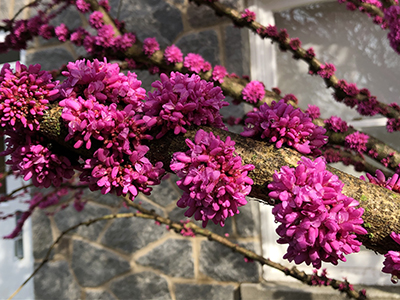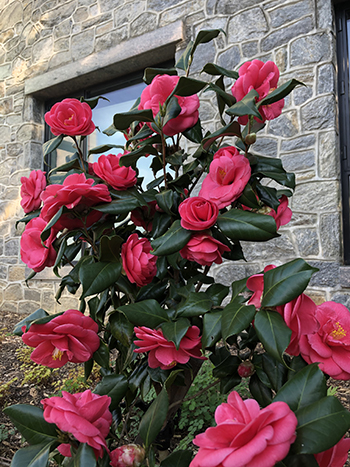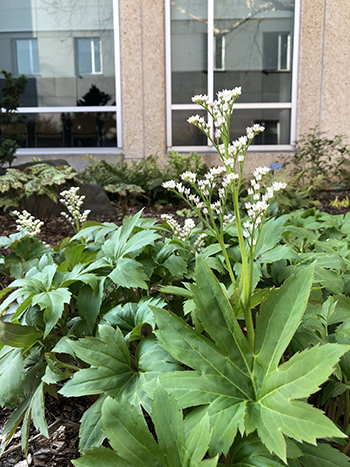
Plants of the Week: April 13

I am easily swayed to purchase a plant with a colorful or quirky cultivar name. Rodgersia podophylla ‘Bloody Wheels’ is certainly an attention-grabbing name. The jarring but accurate description references the 5-7 leaflets with deep jagged lobes at the tips and coarsely toothed margins. New growth emerges a glossy (bloody) reddish-bronze, transitioning to brown and finally green. Fall color is exceptional.
Rodgersia podophylla may flower, producing a dramatic 24” – 36” flower stalk, but is known to be fickle and an unreliable bloomer. Consider adding ‘Bloody Wheels’ to a dappled shade garden. An excellent companion to Actaea, Astilbe, Ligularia, Polygonatum, Syneilesis, ferns and hostas. Rodgersia prefers evenly moist, but not water-logged soils. Check out our planting in the Terry Shane Teaching Garden. Photo credit: J. Coceano

Flower power! Cercis chinensis ‘Don Egolf’ is covered in blooms from tip to trunk. Blooming a bit earlier than our native redbud, Cercis canadensis, C. chinensis bears larger rosy-purple flowers, glossier leaves, and longer seed pods, as well as the reputation for being less winter hardy.
‘Don Egolf’ was introduced by the U.S. National Arboretum in 2000. It is noted for being a sterile cultivar producing an abundance of flowers and no seed pods. It is also resistant to Botryosphaeria canker. A specimen is planted against Sproul Hall in the Tree Peony Collection. Photo credit: J. Coceano

The American Camellia Society lists Camellia japonica ‘Anacosita’ as a “medium pink bloom (RHS 55A) with yellow anthers and ivory filaments,” and considers the plant a “…profuse bloomer. The flowers have heavy petal texture and are long lasting.” Camellia ‘Anacosita’ is a profuse bloomer indeed! A specimen planted along the North side of Kohlberg Hall is a blooming powerhouse. Spring is the ideal time to plant camellias in the greater Philadelphia region. Photo credit: J. Coceano

The white, bell-shaped flowers of Mukdenia rossii ‘Karasuba’ rising above palmate foliage caught my eye in the Harry Wood Garden. Native to China and Korea, Mukdenia is Heuchera-like in habit and overall appearance. The cultivar ‘Karasuba’ features crimson-red leaf tips throughout summer. It may be sold under the translated trade name of crimson fan. Provide moist, fertile soil and protection from hot afternoon sunlight. Photo credit: J. Coceano





No Comments